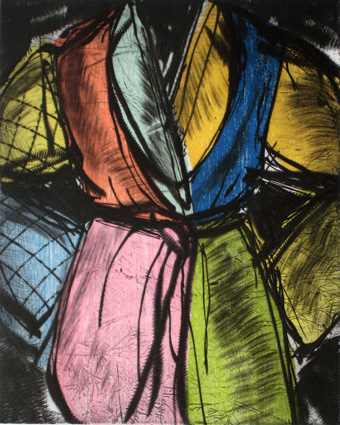This is the third and last of three consecutive posts on pop artist Jim Dine - for biographical notes on Dine see Part I.
“I always need to find some theme, some tangible subject matter besides the paint itself. Otherwise I would have been an abstract artist. I need that hook… something to hang my landscape on” Jim Dine in Jim Dine: Five Themes, 1984
Alan Cristea Gallery, London (2010): Such is Jim Dine’s importance that his work has been celebrated in solo exhibitions from the Guggenheim to the Getty in his native America and in museums in major cities across the length and breadth of Europe over the past 55 years. As he nears his 75th birthday, the demand for his work from institutions and collectors grows ever greater and he still exerts enormous influence over contemporary art practice both here in the UK and abroad.
The “Heart”, one of his most enduring vehicles for his explorations of line and colour and one of his most expressive motifs, will be the common denominator in some 40 recent works, made in his studios in New York and Gottingen, Germany, and on a recent journey to India, which we will exhibit in both of our Cork Street galleries in April and May.
Dine is the Renaissance man of contemporary art – originally performance artist, now at once poet, writer, photographer, sculptor, painter and printmaker.
1982 Rancho Woodcut Heart
1983 Black Heart
lithograph
1986 Hand Painting on the Mandala
1993 Heart for Film Forum (woodcut)
2007 Dear Senior Boy
2008 Merry Snow
2010 Black Friar's Blues
2010 Blue Birds
2010 Boo-Boo Blues
2010 Manhatten at Home
The Month of June no. 1
The Month of June no.2
The Month of June no. 3
The Month of June no. 4
The Month of June no. 6
The Month of June no. 9
The Month of June no. 10






















































